
According to my reference books, there are 41 premiers crus in Chablis which, due to overlapping climats, can theoretically be consolidated into a more manageable 17. Fourchaume is surprisingly large: 130 hectares. Seeing as I had two bottles from different producers in the same vintage, I thought they would be fun to compare. Thanks to the legendary dryness and acidity of Chablis, I also figured that they would make an excellent aperitif. Which they did.
2020 Chablis Premier Cru Fourchaume, Billaud Simon – Founded over two centuries ago, Billaud Simon was bought by the négociant firm of Faiveley in 2014. This wine had a beautiful, subtle nose of hazelnut and match stick. It followed through seamlessly on the palate, which showed poise and more richness than expected. Good length and balance, nothing to fault whatsoever.
2020 Chablis Premier Cru Fourchaume, La Chablisienne – La Chablisienne is one of the most respected cooperatives in France. They produce about one quarter of all Chablis, and members own vineyards in the appellation’s most prestigious vineyards. This Fourchaume was not quite up to the standard of the previous one, but showed great purity and less oak. It was more foursquare and arguably less interventionist than the Billaud Simon.
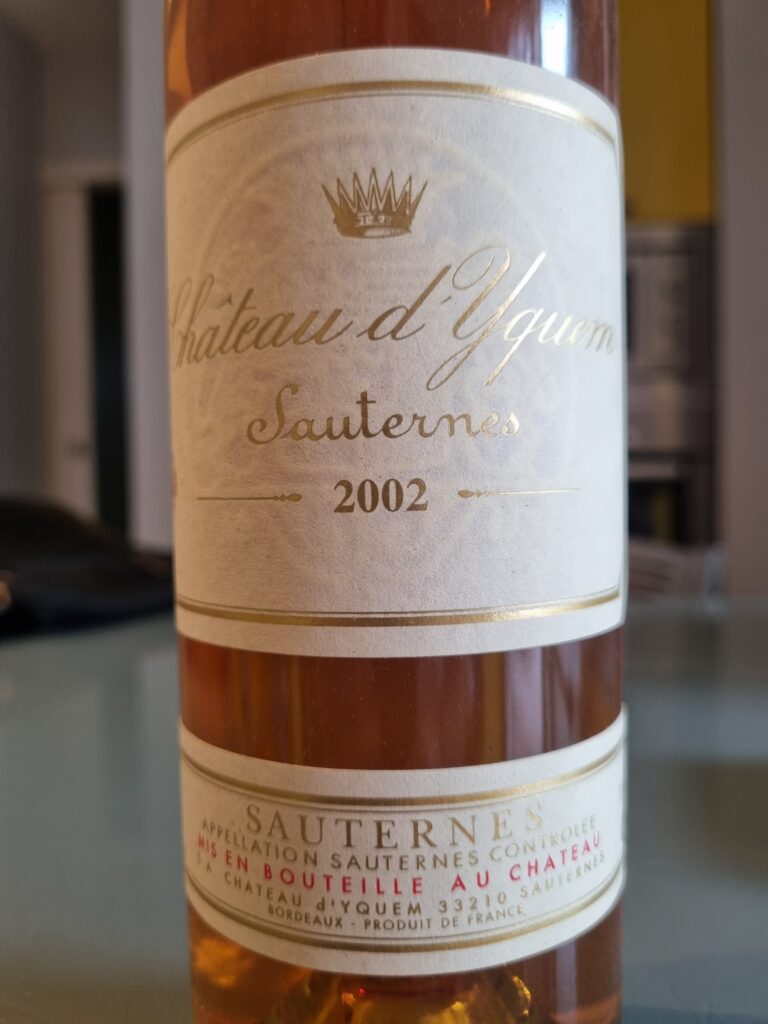
Although it was the month of August, when one generally eats lighter meals, I was welcoming a house guest who loves Sauternes. And the perfect food pairing, of course, is foie gras.
This is what the château has to say about 2002 Château d’Yquem: “2002 was an atypical year for Yquem with excessive temperatures and drought conditions, but lower-than-average sunshine. Ripening and botrytization were very uneven. The harvest began on the 12th of September and lasted until the 5th of November on the latest-ripening plots. Seeing as picking was spread over such a long time, the château considers 2002 one of the most representative vintages Yquem, with remarkable purity and great balance between sugar and acidity.”
We all loved this 2002 Yquem, which is clearly well into its drinking window. The nose was fragrant and ethereal. The wine developed beautifully on the palate, without too much weight or sugar, and with sufficient acidity. Only a certain lack of volume keeps this from being among the château’s greatest vintages.
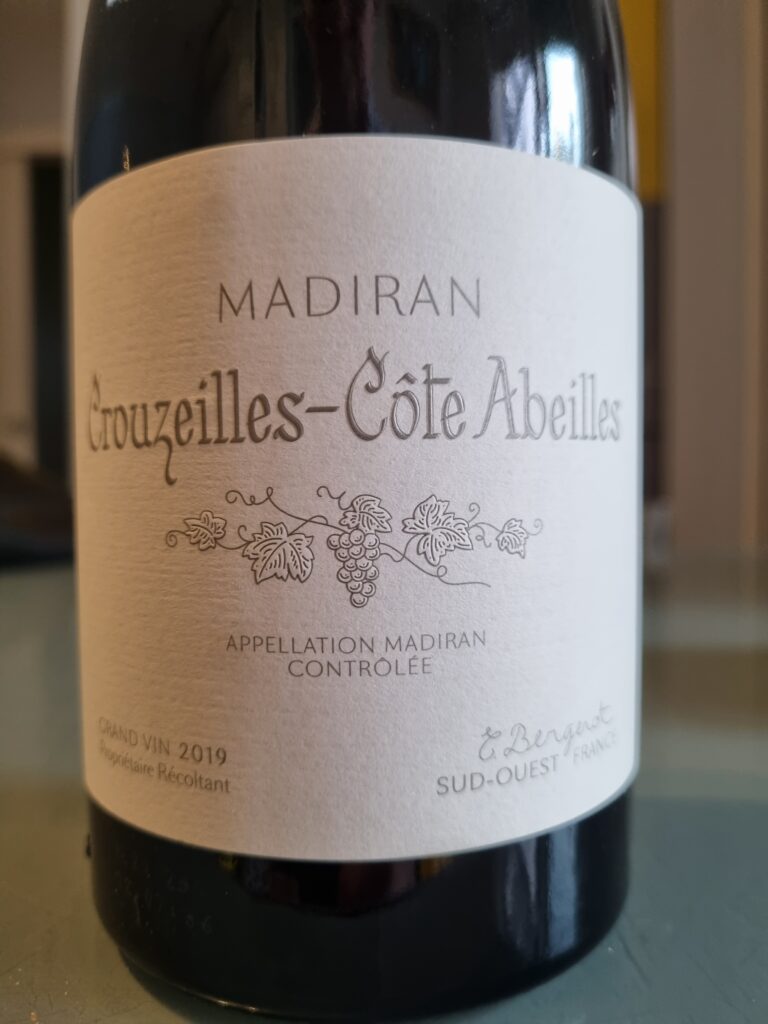
“Vins du Sud-Ouest“ is a catch-all term covering a vast area with very different wines. For instance, the Marcillac appellation is over 300 km. from Bordeaux. Until last week, I had visited all the wine regions of Southwest France except for Madiran, with its white wine counterpart, Pacherenc du Vic Bihl. However, as it turned out, Madiran was on the way to Lourdes where my wife and I went to buy a special rosary for someone (long story…), so we spent a day in the wine country. We visited the Maison du Vin, leaving with a few bottles of red and white, and also stopped at the impressive Château de Crouzeilles, belonging to the local cooperative. Tasting through a range of their wines, I was particularly struck by their 2019 Crouzeilles-Côte Abeilles. This wine comes in a retro Burgundy-shaped bottle with a modern version of the 1950s label. It consists of 90% Tannat and 10% Cabernet Sauvignon and aged in oak (barrels used for one or two previous vintages, no new ones).
This Côte Abeilles would reconcile anyone with Madiran, which has a reputation for grippy unyielding tannin, and not very user-friendly. The more modern style suits entirely. Although maybe missing a little richness, it was definitely in the fine rather than just the good wine category.
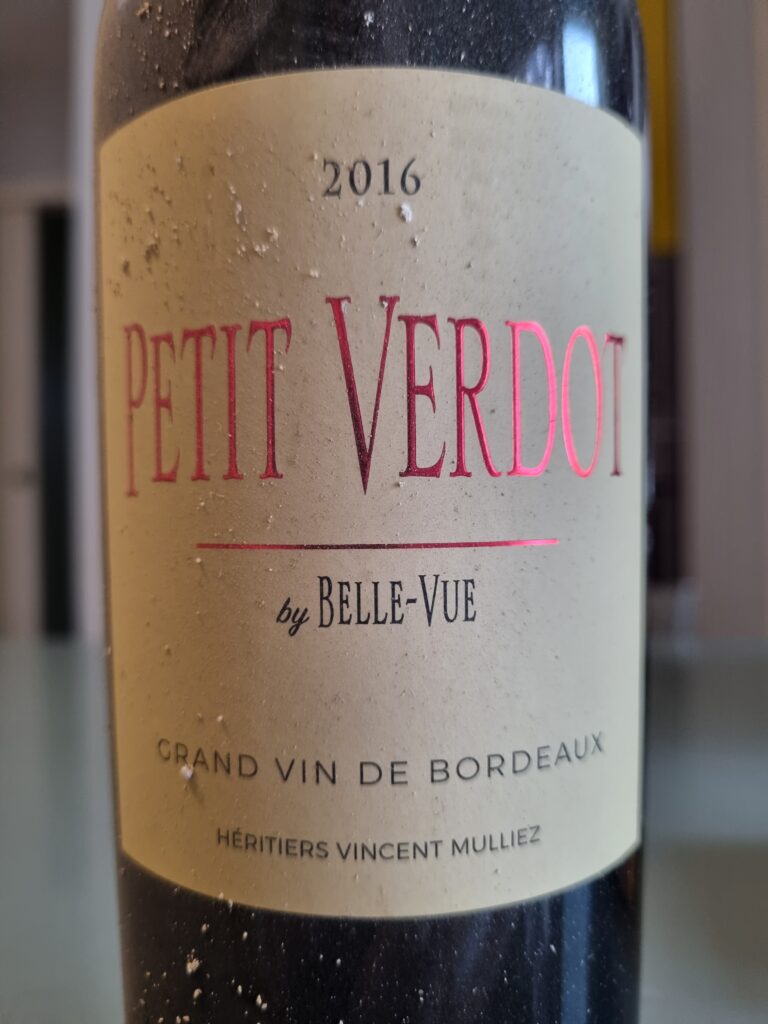
2016 Belle-Vue, Petit Verdot, Bordeaux
Located in Macau in the southern Haut-Médoc, Belle-Vue was acquired by the Mulliez family of the Auchan supermarket chain in 2004 and was revived by the late Vincent Mulliez, succeeded by his wife Isabelle and son Marin. The estate was promoted to Cru Bourgeois Supérieur status in the 2022 classification. Their Petit Verdot comes from a 2.6 hectare plot in the palus (alluvial soil, in fact a former island close to the bank of the Gironde estuary). It’s funny that, coming just after the Madiran, and because of the very deep color and unabashed tannins, my dinner guests thought this might be another Madiran! Tannic, it sure was, and those tannins were very hard and a bit rustic. Of course, time will help to some extent, but I think this is a wine to drink more as a curiosity than for its intrinsic quality.
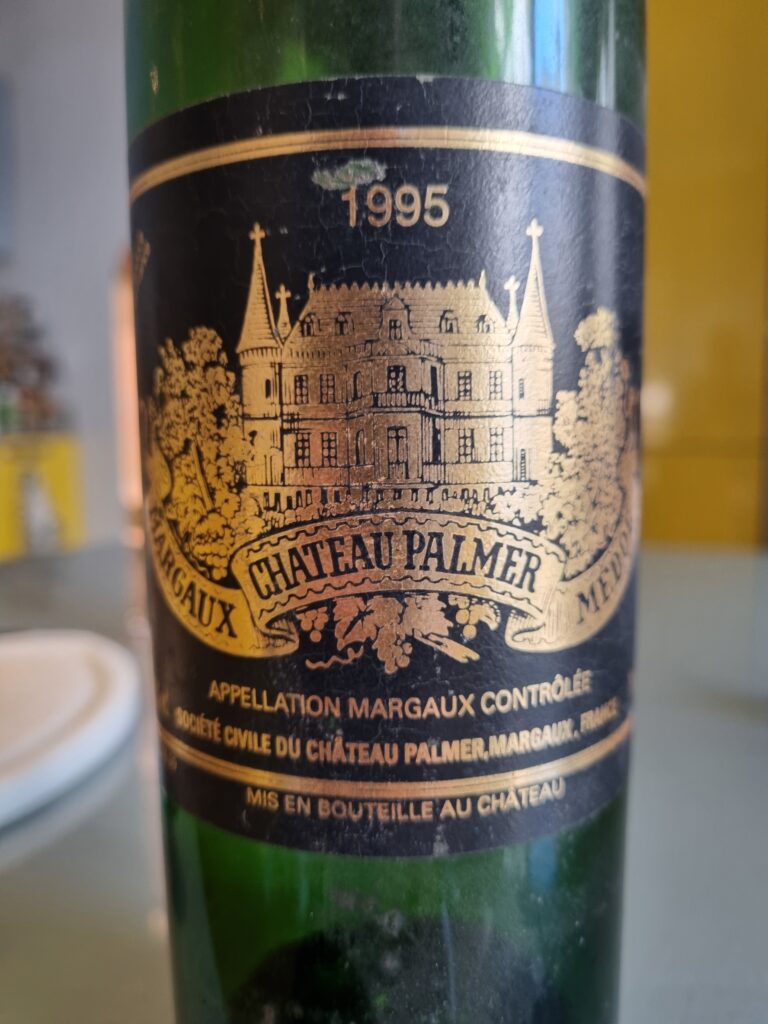
1995 Château Palmer, Margaux. The château describes this as a vintage marked by heat, sun, and Merlot. The months of June, July, and August were among the hottest of the previous half century, and with just 99 mm of rainfall over those three months. Somewhat cool wet weather in September was ideal and dthe precipitation did not dilute the fruit. Each variety could be picked at peak ripeness after the rain. The team at Palmer consider 1995 a Mediterranean vintage.
My dinner guests thought this 1995 Palmer was at least twenty years younger than its age. At 12.5% alcohol, it showed very old school with a lovely tertiary bouquet typical of mature Médoc including the pencil shaving aromatics. The wine was easy to drink and refreshing on the palate, with what I call tea tannin. The tasting pleasure ended with a cool long aftertaste. 95 Palmer may hold for a long time, but I don’t see it actually improving at all.
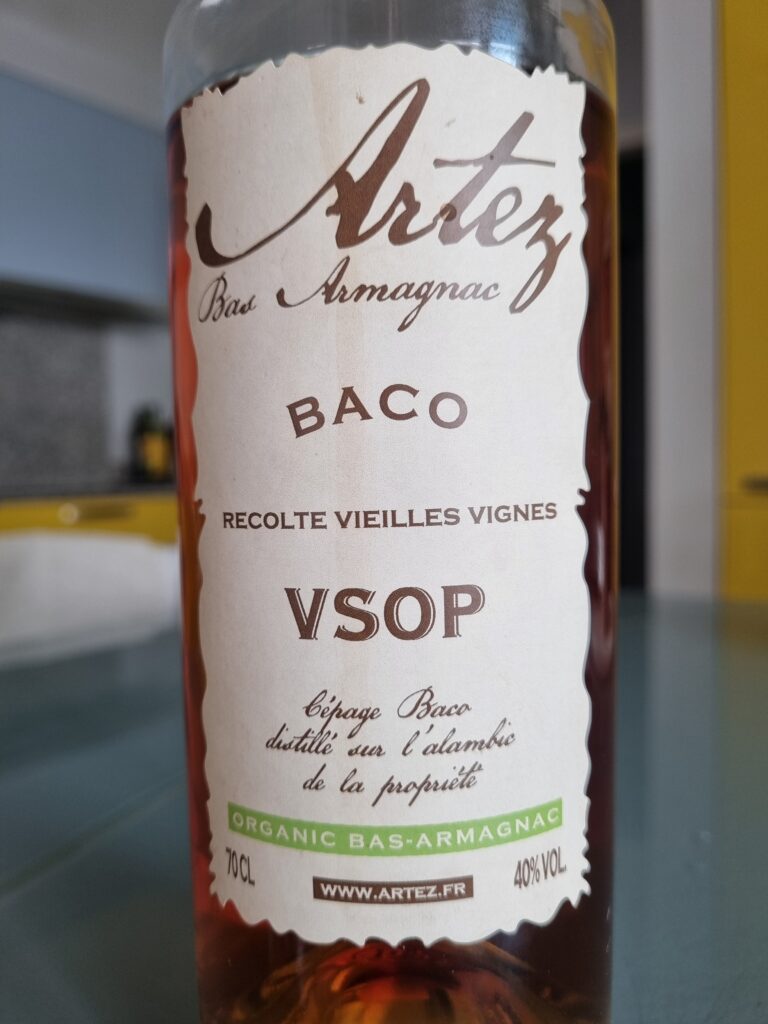
We ended the meal with an unusual VSOP Bas Armagnac from Artez made exclusively from the hybrid Baco Noir grape. I didn’t know what to expect, but was very pleasantly surprised by the quality and smooth aftertaste, without any alcoholic burn. So, this was not just an oddity, but also a very nice drink.
